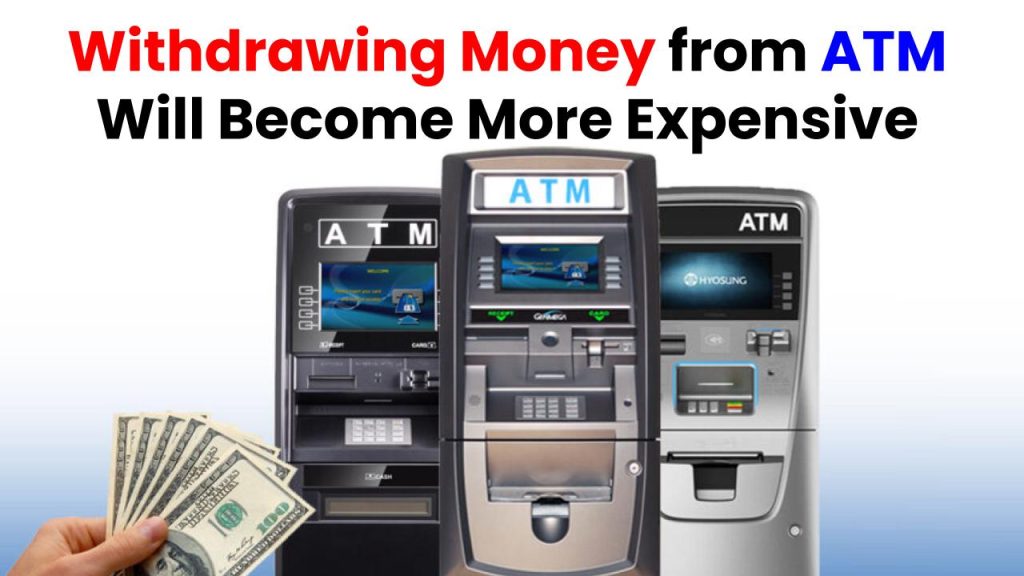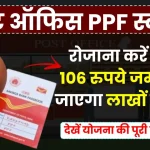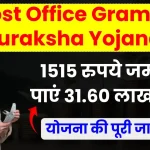
Starting May 1, 2025, withdrawing money from ATMs in India will become more expensive. This change is driven by the Reserve Bank of India’s (RBI) decision to revise ATM interchange fees, making it essential for customers to understand how these new charges will impact their banking habits. Whether you withdraw cash frequently or occasionally, knowing these updated rules will help you avoid unnecessary fees and manage your finances better.
New ATM Withdrawal Rules
| Key Points | Details |
|---|---|
| Effective Date | May 1, 2025 |
| ATM Interchange Fee (Financial Txn) | Increased from ₹17 to ₹19 per transaction |
| ATM Interchange Fee (Non-Financial Txn) | Increased from ₹6 to ₹7 per transaction |
| Free Transactions (Metro Cities) | 5 free transactions per month at other banks’ ATMs |
| Free Transactions (Non-Metro Cities) | 3 free transactions per month at other banks’ ATMs |
| Who Will Be Affected | Customers exceeding free withdrawal limits, especially frequent withdrawers |
Starting May 1, 2025, withdrawing money from ATMs will become costlier due to the increase in ATM interchange fees approved by the Reserve Bank of India (RBI). Customers exceeding their free transaction limits will now pay ₹19 for financial transactions and ₹7 for non-financial transactions at other banks’ ATMs. To avoid extra charges, plan your withdrawals smartly, prioritize digital payments, and use your own bank’s ATM as much as possible.
Why ATM Withdrawal Charges Are Changing
The Reserve Bank of India (RBI) recently approved a hike in ATM interchange fees. An interchange fee is a charge one bank pays to another when their customers use an ATM that doesn’t belong to their bank. Banks often pass on these fees to customers, especially after regulatory changes. This latest revision, effective May 1, 2025, means the cost of withdrawing cash from ATMs—particularly beyond the free transaction limit—will increase.
This move is part of RBI’s broader aim to help banks cover increased operating costs due to inflation, maintenance, and security upgrades. However, customers will now have to pay slightly more for certain transactions, making it essential to plan withdrawals wisely.
see also: HDFC Bank Launches Diplomat FD Scheme
What Is an ATM Interchange Fee?
To make it simple: when you use an ATM that doesn’t belong to your bank, your bank pays the ATM-owning bank an interchange fee. Banks, in turn, may recover these costs from customers, particularly if they withdraw cash frequently or outside their bank’s ATMs.
Previous Fee Structure
- Financial Transaction Fee: ₹17 per transaction
- Non-Financial Transaction Fee (Balance Inquiry, Mini-Statement, etc.): ₹6 per transaction
New Fee Structure (From May 1, 2025)
- Financial Transaction Fee: ₹19 per transaction
- Non-Financial Transaction Fee: ₹7 per transaction
While it may seem like a small increase, over multiple transactions, these charges can accumulate significantly, especially for people who rely heavily on ATMs for cash.
How Many Free ATM Withdrawals Do You Get?
RBI rules provide a fixed number of free ATM transactions each month:
- Metro Cities: 5 free transactions (including financial and non-financial) at other banks’ ATMs.
- Non-Metro Cities: 3 free transactions at other banks’ ATMs.
Your own bank’s ATM may offer unlimited free transactions, but using a competitor’s ATM will attract charges beyond these limits.
Pro Tip: Plan your withdrawals carefully. Try to withdraw larger amounts in fewer transactions to avoid crossing the free limit. Also, prefer using your bank’s ATM.
Impact on Customers: Who Will Pay More?
1. Frequent Cash Withdrawers
If you’re someone who prefers cash over digital payments and frequently uses ATMs, especially from different banks, you are most likely to see higher charges.
2. Residents of Metro Cities
Since people in metro cities typically use more ATMs, exceeding the five-transaction limit is common.
3. Professionals with Travel Requirements
People traveling often may end up using ATMs from multiple banks, increasing the chances of paying extra.
How to Minimize ATM Withdrawal Costs
Here are some actionable tips to avoid unnecessary ATM fees:
1. Use Your Bank’s ATM as Much as Possible
Transactions at your bank’s ATMs are usually free or come with more lenient limits.
2. Withdraw Higher Amounts Less Frequently
Instead of making multiple small withdrawals, plan ahead and withdraw a larger sum.
3. Use Digital Payment Methods
Consider switching to UPI, debit cards, or online banking for payments whenever possible. It’s safer, and you avoid ATM charges altogether.
4. Track Your Free Transaction Limits
Most banks notify you via SMS about your remaining free ATM transactions. Keep an eye on these messages.
The Broader Economic Reason Behind the Fee Hike
Banks have long argued that ATM infrastructure requires substantial costs—maintenance, security, cash logistics, and compliance. As inflation and technological upgrades continue, operational expenses have increased. To keep ATMs sustainable, RBI periodically allows banks to revise fees.
Industry experts suggest that while digital payments are growing in popularity, a significant chunk of India still depends on cash, particularly in rural areas. Hence, keeping the ATM network robust remains crucial.
see also: This Post Office Scheme is Giving Women a Return of more than Rs 2 Lakh
New ATM Withdrawal Rules FAQs
1. Why is RBI increasing ATM fees from May 1, 2025?
RBI approved the fee hike to help banks manage rising operational costs, including maintenance, inflation, and technology upgrades.
2. How much will I be charged after crossing the free limit?
You will be charged ₹19 for financial transactions and ₹7 for non-financial transactions at other banks’ ATMs beyond the free limit.
3. Will my bank notify me about these charges?
Yes, banks typically send SMS or email alerts informing customers about charges after free transactions are exhausted.
4. Are digital transactions affected by this rule?
No, this rule applies only to ATM withdrawals and balance inquiries. Digital payments via UPI, NEFT, IMPS, etc., remain unaffected.
5. How many free ATM transactions do I get?
You get 5 free transactions in metro cities and 3 free transactions in non-metro cities per month at other banks’ ATMs.











